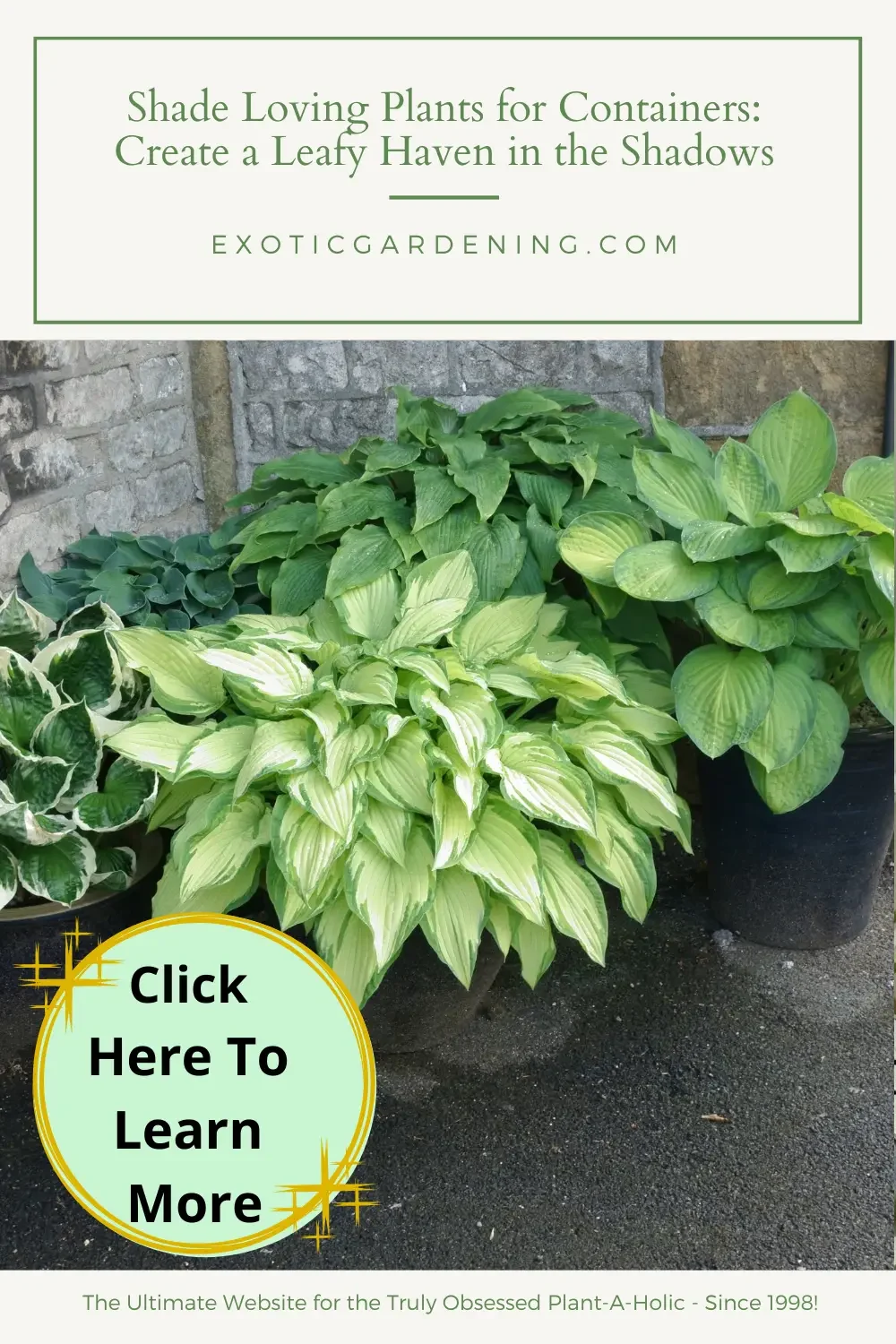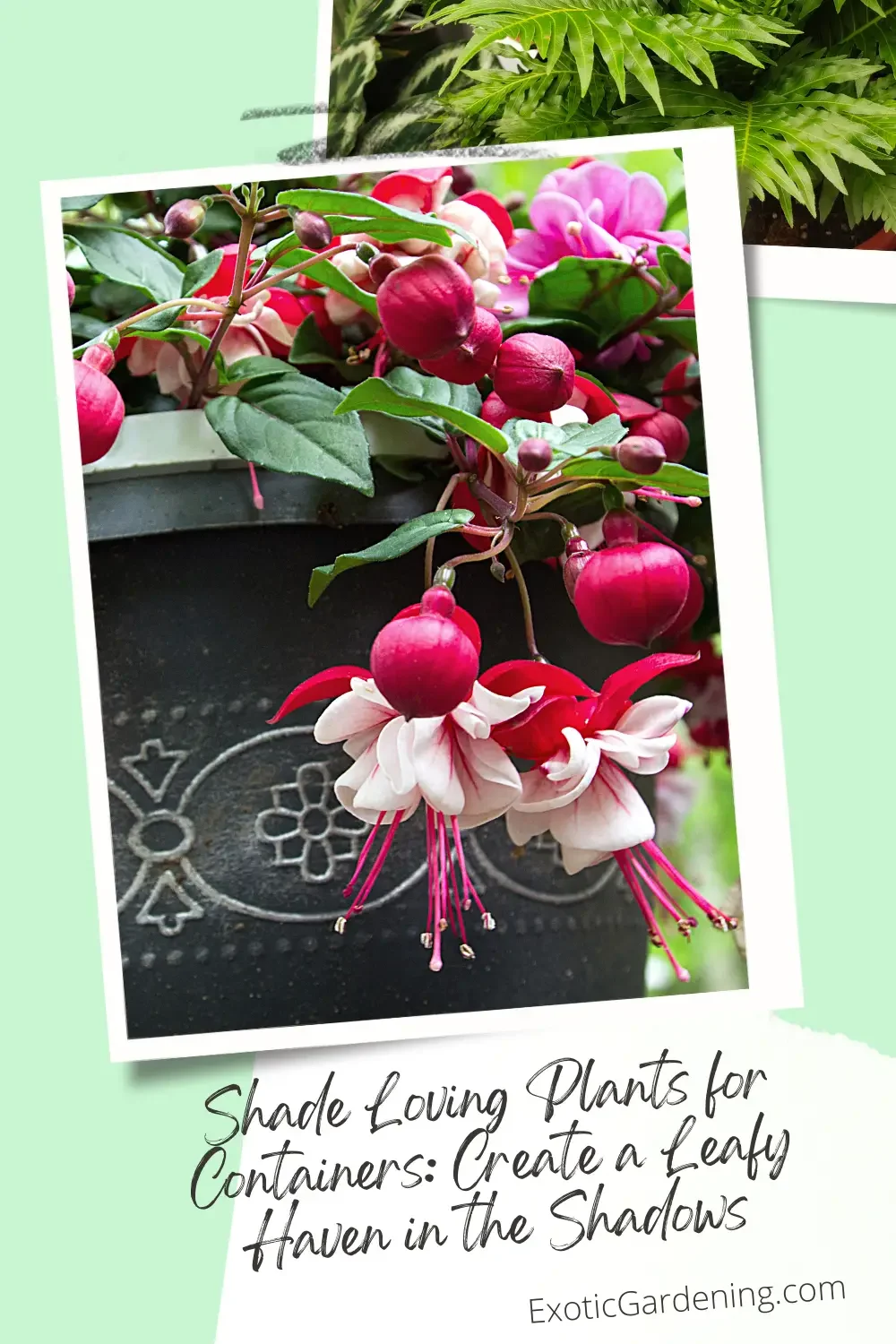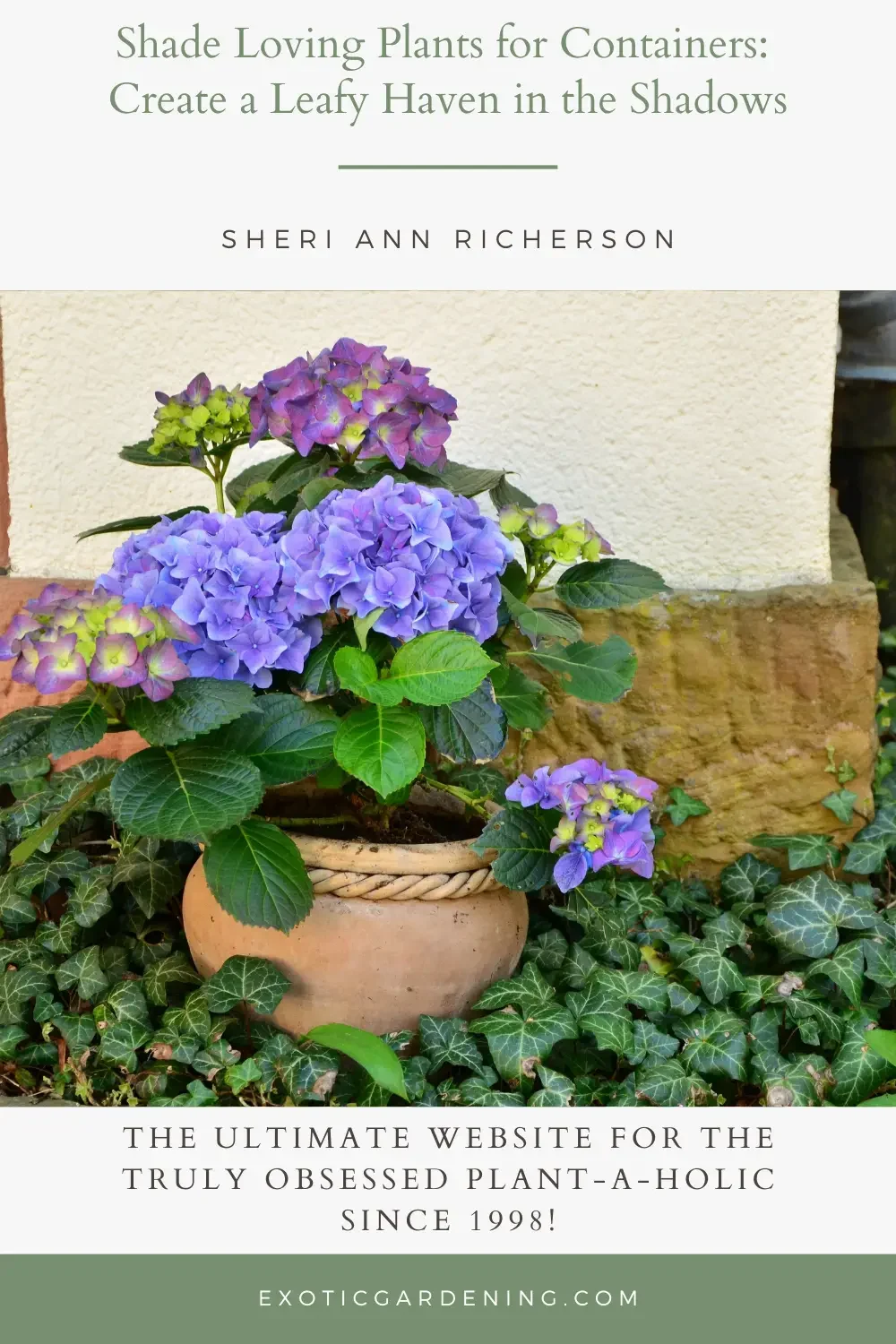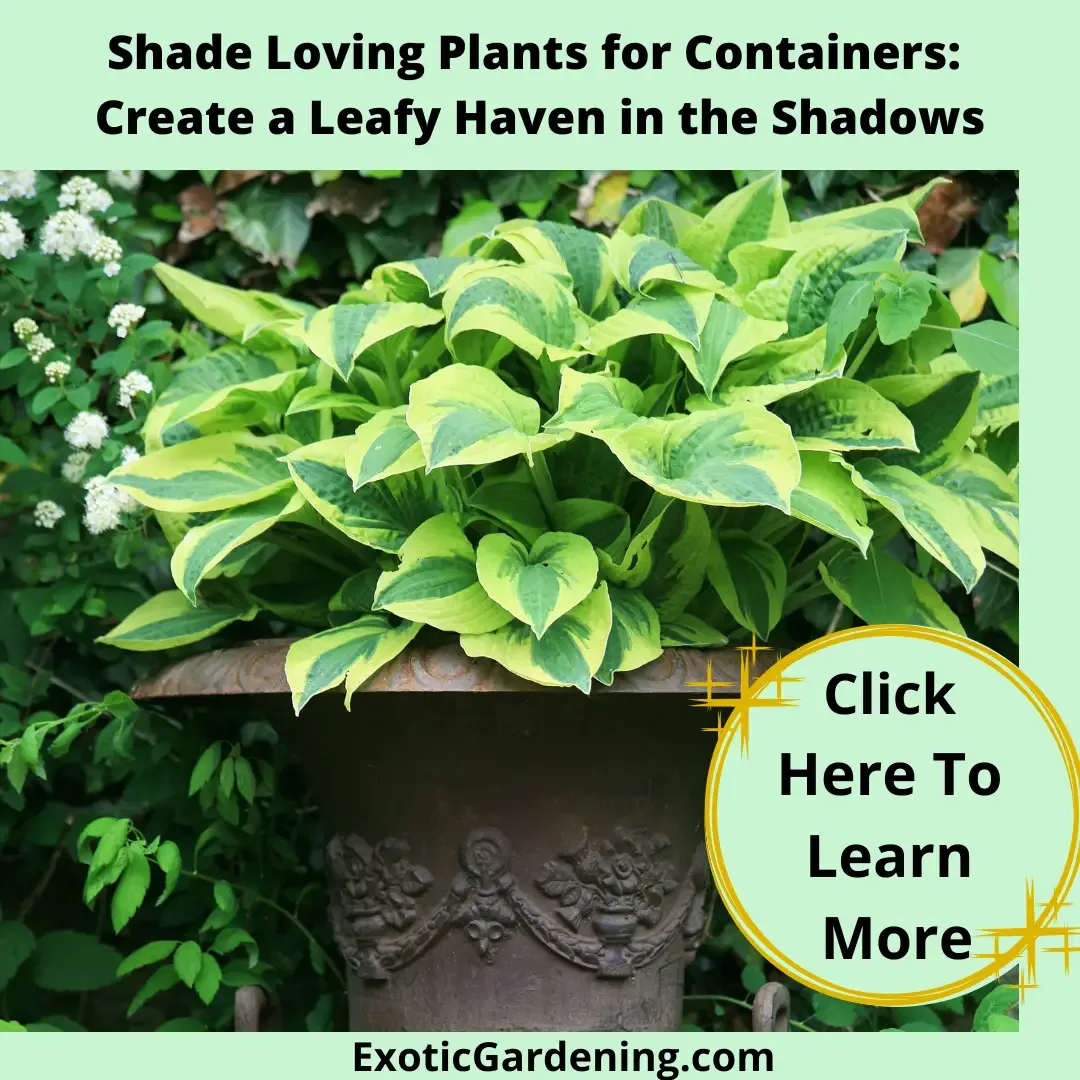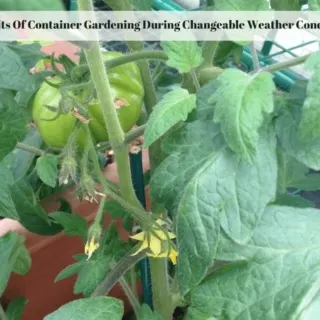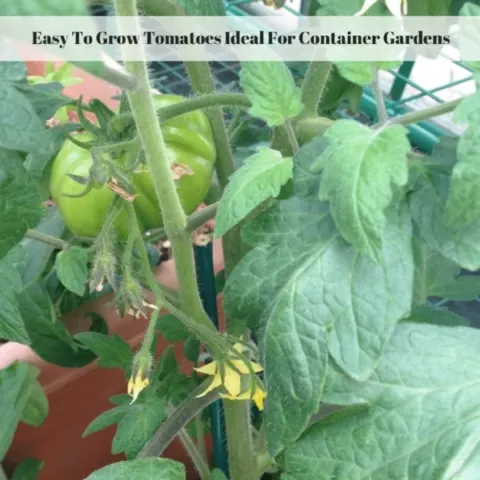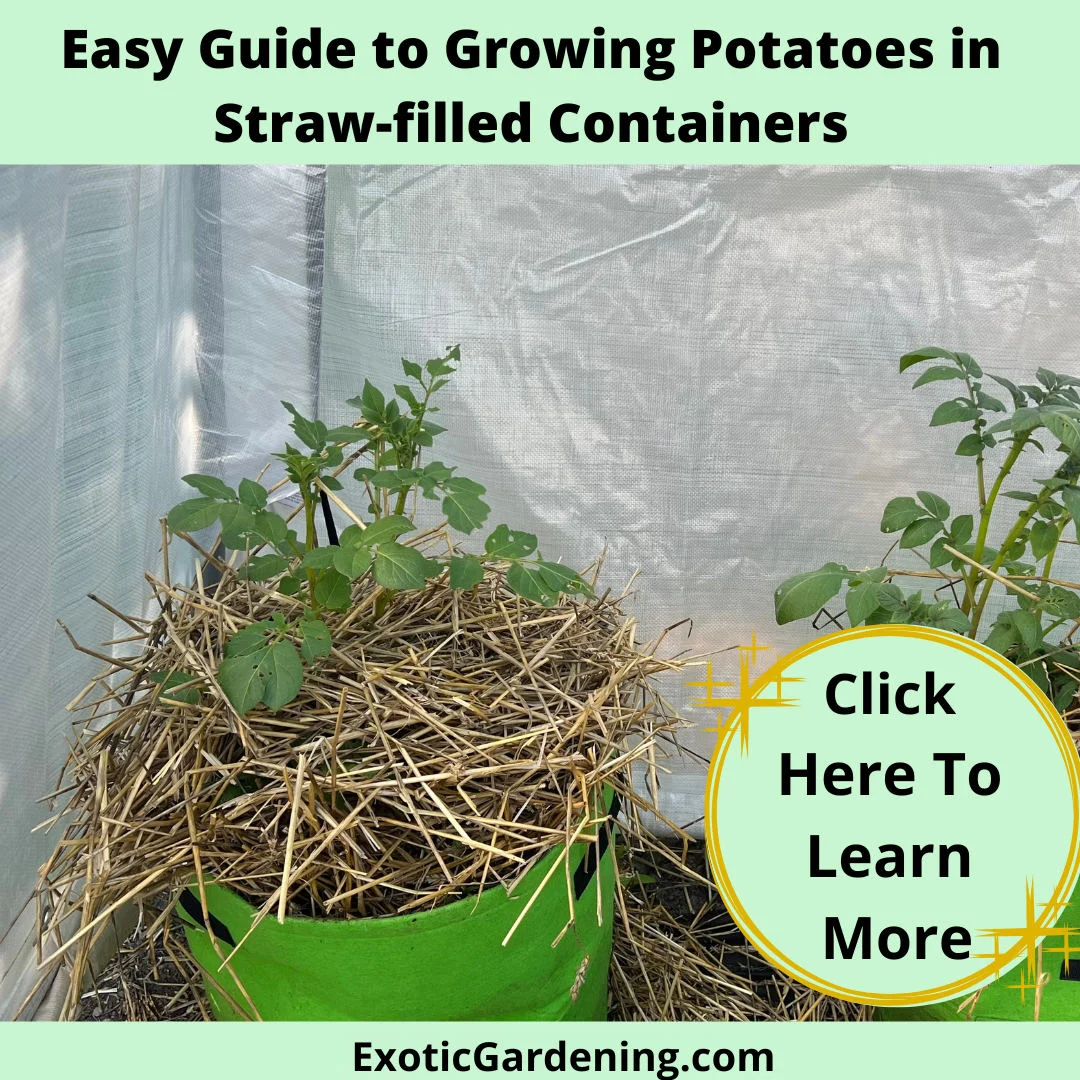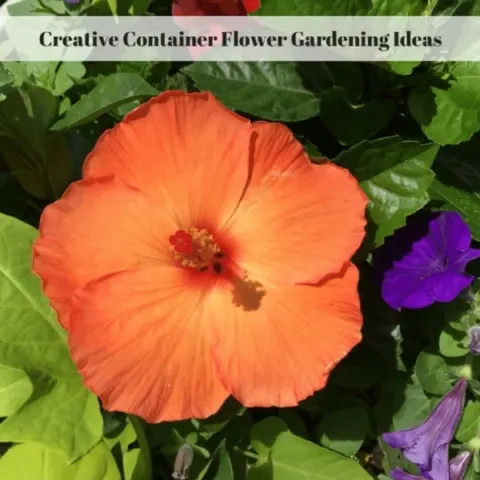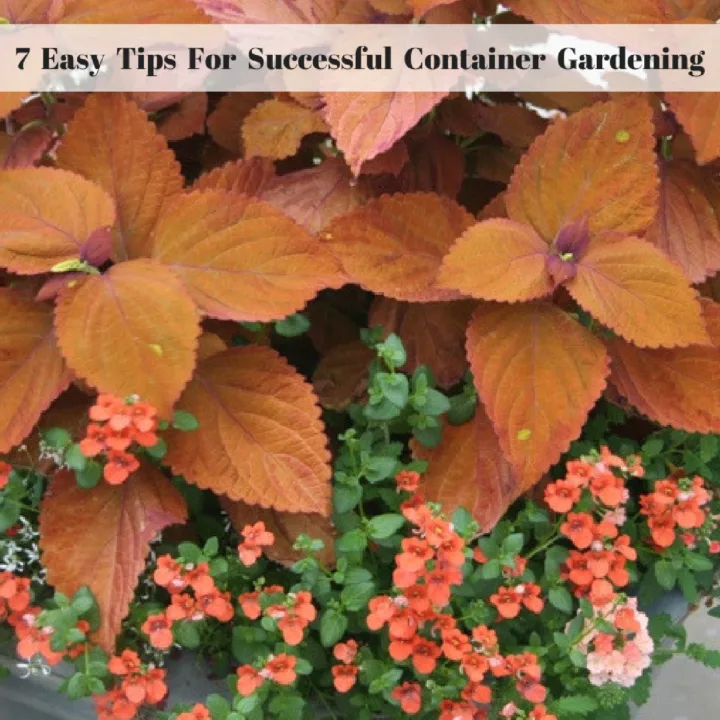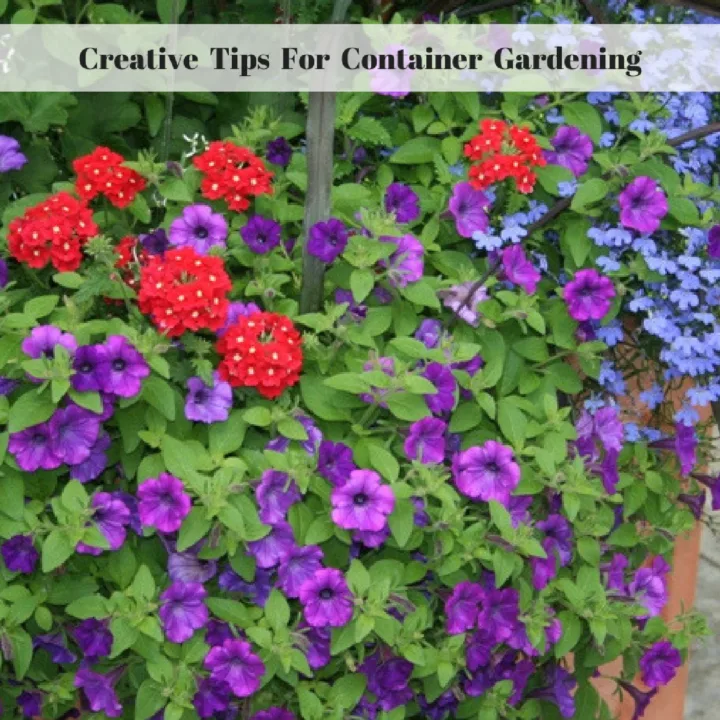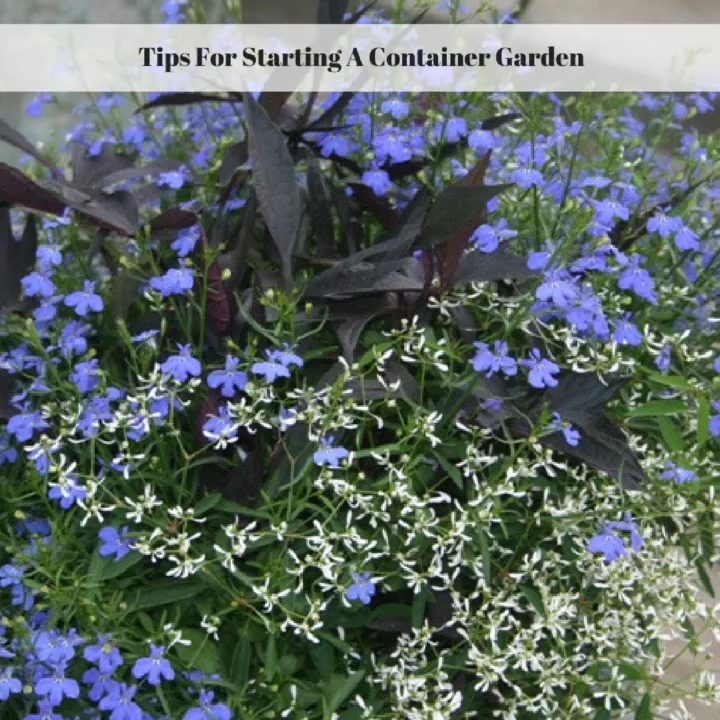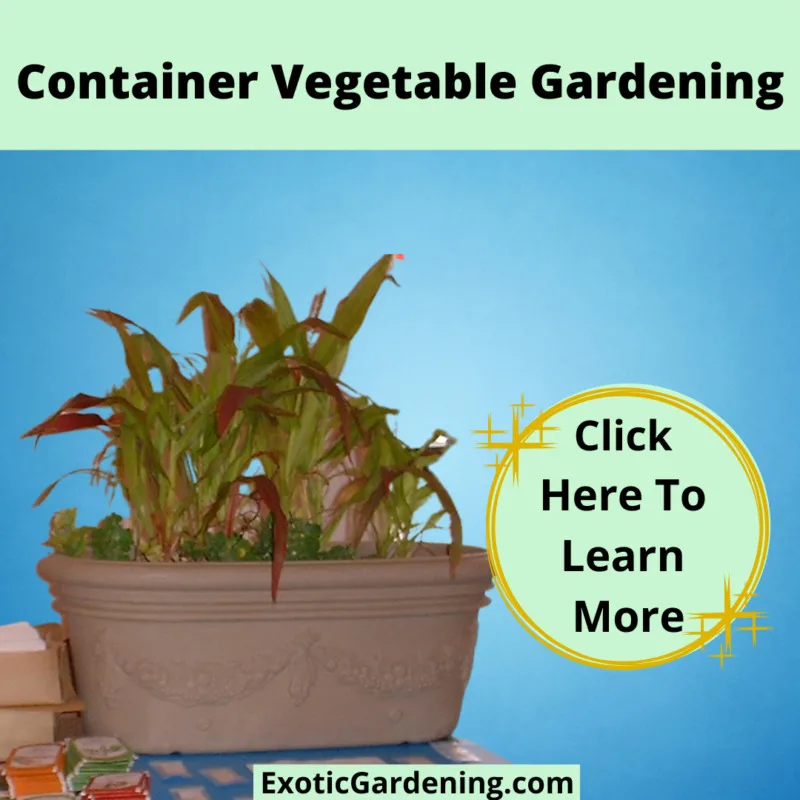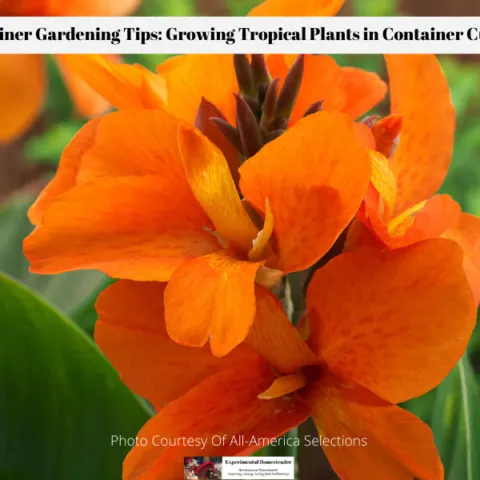Whether it's a cool corner of your patio, an area under a shady tree, or a balcony that barely sees the sun, even the shadiest spots can be transformed into a lush, vibrant garden with the right shade loving plants for containers.
Understanding the unique characteristics and requirements of these shadow-friendly florae, along with the considerations for container gardening, is crucial.
From pinpointing the ideal amount of sunlight and the best type of soil for these green gems to selecting the appropriate containers, every detail impacts their health and growth.
This knowledge will not only nurture your plants but also guide you in choosing specimens that infuse texture, color, and life into your cloistered corners.
Ready to transform those shady nooks into thriving oases?
Let's dive into the world of shade-loving plants for containers.
When it comes to the world of gardening, understanding the individual needs of each type of plant is crucial.
This is particularly true with shade-loving plants.
As gardeners, we face the interesting challenge of decoding the mysteries of these species and giving them the right kind of care to thrive.
The Many Shades of Shade
Due to their nature, shade-loving plants are often found under the tree canopy or in forest-like environments where they're sheltered from harsh sunlight.
These botanical gems have their comfort zone in shady spots and shady doesn't necessarily mean complete darkness.
In the realm of shade gardening, understanding the distinctions among various shades is essential for optimal care and growth:
- Light Shade: Involves limited exposure to sunlight.
- Partial Shade: Represents a moderate balance between light and shadow.
- Dappled Shade: Occurs when sunlight filters through leaves, creating a gentle, shifting pattern.
- Full Shade: Characterized by almost complete darkness with minimal direct sunlight.
Knowing these differences is critical for providing the right conditions for shade-loving plants.
Nurturing the Right Soil
When it comes to soil, do not underestimate its importance.
For these shade-dwellers, moist and well-draining healthy soil is a godsend.
Because they don't get much sunlight, their soil tends to stay damp longer.
However, ensure the soil doesn't get waterlogged as this can cause root rot in many shade-loving plants.
Incorporating organic matter like compost or well-rotted manure into the soil can improve its structure and drainage, creating an inviting bed for these delicate beauties.
Mastering the Art of Subtle Watering
In the arena of watering, subtlety is key.
Shade-loving plants have a lower rate of photosynthesis due to reduced sunlight, which results in slower growth and lower water requirements.
Over-watering can cause more harm than good.
It's safer to touch and observe the soil’s moisture level and water only when necessary.
A consistent check on the moisture level ensures the plants will be hydrated without a chance of overwatering.
Feeding with a Gentle Touch
Now let's talk about feeding these shade enthusiasts.
A gentle approach works best as their nutrient needs are not as high owing to lesser sunlight exposure and slower growth.
A slow-release organic fertilizer works wonders for these shade-loving plants.
Do remember not to over-fertilize as this can burn the root systems and cause nutrient overloads, which end up doing more harm than good for these gentle souls.
Embracing the Virtue of Patience
Finally, when dealing with these shade-loving plants, patience is an ultimate virtue.
They are slow to grow, slower still to mature.
Yet with time, these unassuming undergrowths transform into eye-catching beauties, spreading serene tranquility that only a shade garden can offer.
Suffice to say, while nurturing shade-loving plants may seem like a daunting task, a strong understanding of their needs makes it possible for these delicate wonders to adorn garden spaces, earning them the praise they well deserve.
The world of shade-loving plants proves that not every bloom needs to be in the spotlight - sometimes, the true stars shine in the shadows.
Choosing the Right Containers for Shade-Loving Plants
Now that there is comprehensive knowledge about all the nuances of growing shade-loving plants, it's time to shed some light on one of the fundamental aspects of shade gardening – choosing the perfect container.
Choosing accurate pots for these sun-averse species is as important as selecting the right kind of soil or understanding their watering and nutritional needs.
The Size Matters
There is no one size fits all when it comes to choosing containers for shade-loving plants.
Every type of plant has its own root system and growth habit that dictates the appropriate pot size.
When choosing a container, consider that shade plants usually have slower growth, i.e., their roots spread outward slower than sun-loving counterparts.
Therefore, a pot that's too large could result in over-hydrating the plant as the soil would take longer to dry.
On the contrary, a pot that is too small may restrict root growth and limit the plant's size considerably.
A golden rule when selecting a pot size is to make sure the root ball fits comfortably within the pot with a little room to grow.
Consider the Material
The container's material can significantly impact the health and growth of your shade-loving beauties.
Glazed ceramic pots are a popular choice due to their aesthetic appeal.
They hold moisture for extended periods and are excellent for plants needing consistent moisture levels.
Terra cotta pots are attractive and porous, meaning they allow for excellent air exchange but can also dry quickly.
These pots are suitable for shade plants that prefer well-drained soil.
Plastic containers are lightweight and retain moisture well but may become overly hot, depending on location and temperatures.
It's essential to weigh your plant's needs with the climate and locale when choosing a container material.
Shade-loving trees and shrubs, or those which grow overly large may do best in wooden containers.
These provide ample space, excellent insulation, and the possibility to change or add soil as needed.
Despite being heavier and less mobile than other options, these containers are some of the most reliable for fostering a healthy environment for sizeable shade-loving plants.
Drainage is Key
No matter what type you choose, be sure that your container has excellent drainage.
Shade plants, in their natural environment, are typically protected from heavy rainfall by the foliage of taller plants overhead.
Well-draining containers mimic this environment by preventing excessive water retention, especially if the plant in question prefers not to have continuously wet roots.
While any container can have holes drilled into them for better drainage, it's preferable to select one that already accommodates this need.
Personal Aesthetics
Finally, while not crucial to the plant's health, a pot's aesthetic value is significant in the overall look and feel of your shade garden.
Whether you're going for sleek, modern planters for an urban feel or rustic, earthenware pots for a more vintage look, your containers can be just as much of a display as the plant itself.
Remember, cultivating shade-loving plants is a journey of patience, tranquility, and close observation.
Every choice, including the picking of the perfect container, reflects a carefully cultivated understanding of shade-loving flora that transcends mere gardening—it enters the realm of true hobbyist horticulture.
From the root space to its personal aesthetics, each aspect of a container plays a pivotal role in your success as a caretaker for these lovely, shade-dwelling species.
Embark on this unique container-selection adventure and witness your shade-loving plants thrive like never before.
Top Shade-Loving Plants for Containers
Now that we've laid down the basics, let's explore some of the best shade-loving plants to grow in containers.
These green companions can transform shady spots into vibrant, lush oases:
- Hostas: These perennial favorites come in a wide range of sizes, leaf shapes, and colors, making them a versatile choice for shaded containers. They thrive in light to partial shade, providing a rich tapestry of foliage textures and colors.
- Ferns: With their delicate fronds, ferns add a prehistoric, woodland charm to the garden. They thrive in dappled shade or partial shade conditions.
- Astilbe: Known for its feathery plumes rising above fern-like foliage, it brings elegance and soft color to the shade. Astilbe prefers partial to full shade for optimal growth.
- Bleeding Hearts: This perennial produces graceful heart-shaped pink and white flowers on arching stems above grey-green foliage, making it a captivating centerpiece for shady patios or balconies. They prefer partial to full shade.
- Hellebores: Known for their enchanting early blooms, Hellebores come in various colors and offer a touch of elegance to shade gardens. They thrive in partial to full shade, making them a great choice for shady corners.
- Japanese Pieris: A shade-tolerant shrub, Japanese Pieris offers year-round interest with evergreen leaves, bell-shaped spring flowers, and vibrant new growth, thriving in containers in a shade garden. They do well in partial to full shade.
- Impatiens (Busy Lizzies): These shade-loving annuals come in various colors and offer continuous summer flowering. They complement the green and white elements of the garden and are often used for underplanting under shrubs or trees. Impatiens thrive in partial to full shade.
- Climbing Hydrangea: The king of shade-loving climbing plants, it boasts slow-growing, self-adhesive vines with large white blossoms in summer and attractive green leaves turning yellow in the fall. Perfect for covering shaded walls or creating a backdrop for your potted shade garden. It does well in partial to full shade.
- Hakone Grass (Japanese Forest Grass): This shade-loving ornamental grass features arching golden or variegated leaves, adding tranquility and movement while providing a delightful contrast to other foliage types. Hakone Grass thrives in light to partial shade.
- Fuchsia: Fuchsia is a shade-loving plant known for its pendulous, tubular flowers in vibrant hues. It thrives in partial to full shade, making it an excellent choice for adding a splash of color to shady areas.
With these options, you can create a cooling oasis in your garden, regardless of the type of shade or aesthetic goal you have in mind.
Shade container gardening allows for experimentation with various plant species, bringing beauty and serenity to any garden space.
Maintaining Shade-Loving Plants in Containers
Shade-loving plants, those gentle whispers in the horticultural world, bring a serene ambiance to gardens, especially in less light-prone areas.
Growing them in containers offers endless possibilities for creating a shady garden sanctuary.
If you're an enthusiast looking to ensure their success, here's what's next for your shade-loving container creations.
Choosing the Right Container Depth
Container selection is crucial, but don't stop there.
Planting depth, much like in an open garden, significantly impacts your plants' vibrancy and survival.
Containers should provide ample space for root growth.
Ideally, the initial soil surface within the container should sit about an inch below the rim.
This "watering space" prevents the drying of the potting media and promotes healthier, more vigorous plants.
Feeding Your Shade-Loving Beauties
As mentioned earlier, shade plants have lower nutrient requirements, and slow-release organic fertilizers are their preference.
However, a little extra nutrition can be beneficial.
Adding a layer of compost to the topsoil in your containers can provide an additional nutrient boost, especially for voracious feeders like ferns and astilbe.
Vigilance for Pests and Diseases
As shade-loving plants grace your garden with their elegance, pest and disease management becomes a top priority.
While these plants are resilient, vigilance is key.
Regularly check for signs of pests and diseases, and take a proactive approach to quarantine affected plants and use organic pest controls to ensure your garden remains a stunning spectacle.
Strategic Placement of Containers
Proper placement of containers is another significant aspect.
Shade-loving plants thrive with the right balance of sunlight and shade.
Position them in areas that mimic their natural habitat – think of dappled sunlight peeking through a tree's canopy or the cool, reflective light near a white wall.
Winter Protection for Containers
As winter approaches, it's essential to provide a safe haven for your container plants.
Colder temperatures can harm these tender beauties, especially those that aren't frost-tolerant.
Consider moving containers closer to the house or insulating them to shield the plants from the cold and extend their lifespan.
Apart from these tangible factors, what truly ties successful shade-loving container gardening together is the intangible passion of the hobbyist gardener.
Gardening is an art, and, like any successful artist, it requires patience to see your garden gradually unfold into its full glory.
With the right knowledge, a watchful eye, and an open mind to learn along the way, anyone can transform their shade garden into a lush paradise.
Keep nurturing your green thumb, and watch your garden return the love with every fresh sprout and new bloom!
Nurturing Your Shade Garden: A Seasonal Journey
The allure of a shade-filled garden extends far beyond the realm of its lush plants; it's the love, attention, and meticulous care that breathe life into this verdant sanctuary.
Cultivating these shade-loving beauties demands the art of proper watering, timely feeding, vigilant pest control, and meticulous pruning.
Regular care and maintenance form the cornerstone of our shade-loving plant's health and vitality, ensconced within their individual containers.
This dedicated attention contributes to the creation of a beautiful, serene, and welcoming garden space that can be enjoyed year-round.
Furthermore, understanding how to arrange these plants effectively adds another layer of beauty.
Thoughtful placement optimizes their aesthetics, ensuring a continuous visual feast, regardless of the season.
As you venture into the world of shade gardening, may your path be filled with exciting discoveries, seasonal learning, and, most importantly, the joy of witnessing these beautiful blooms grace your garden.
Frequently Asked Questions (FAQs) About Shade Gardening
Q. What are the best shade-loving plants for containers?
A. Some excellent options include Hostas, Ferns, Astilbe, Bleeding Hearts, Hellebores, Japanese Pieris, Impatiens, Climbing Hydrangea, Hakone Grass, and Fuchsia.
Q. How much sunlight do shade-loving plants need?
A. Shade-loving plants thrive in partial to full shade, which means they prefer limited direct sunlight exposure.
Q. What's the ideal container depth for shade-loving plants?
A. Containers should allow sufficient space for root growth, typically with the initial soil surface sitting about an inch below the rim to prevent drying.
Q. How often should I fertilize my shade-loving plants in containers?
A. Slow-release organic fertilizers are a good choice, and you can also add a layer of compost to the topsoil for an extra nutrient boost.
Q. Are shade-loving plants more resistant to pests and diseases?
A. While they are generally resilient, regular vigilance is necessary. Check for signs of pests and diseases, and use organic pest controls when needed.
Q. What's the best way to arrange shade-loving plants in containers?
A. Place them in areas that mimic their natural habitat, such as dappled sunlight under a tree's canopy or in cool, reflective light near a white wall.
Q. Can I grow shade-loving plants in colder climates?
A. Yes, you can, but it's important to protect them from freezing conditions. Consider moving containers closer to the house or insulating them.
Q. Do shade-loving plants require as much water as sun-loving plants?
A. Shade-loving plants have lower water requirements due to reduced photosynthesis. It's essential to monitor soil moisture and water only when necessary.
Q. What are some common mistakes to avoid in shade gardening?
A. Avoid overwatering, choosing the wrong plants for the type of shade, and planting in containers without proper drainage.
Q. Can I mix different types of shade-loving plants in the same container?
A. Yes, you can create visually appealing combinations by selecting plants with similar shade preferences and aesthetic appeal.
Q. Are there any specific pests that commonly affect shade-loving plants?
A. Some common pests include slugs, snails, aphids, and spider mites. Regular checks and proactive measures can help keep them in check.
Q. How do I protect my shade-loving plants from extreme summer heat?
A. Position containers in areas with dappled or filtered sunlight to shield them from intense heat, and ensure they receive adequate moisture.
Q. Can I transplant shade-loving plants from my garden to containers?
A. Yes, many shade-loving plants can be successfully transplanted into containers, provided they are suitable for container gardening.
Q. Do shade-loving plants have specific pH and soil requirements?
A. While requirements may vary by species, most shade-loving plants prefer slightly acidic to neutral soil and well-draining potting mix.
Q. Are there any deer-resistant shade-loving plants?
A. Some deer-resistant options include Hostas, Bleeding Hearts, and Ferns, but deer preferences can vary by region.
Q. Can I use shade-loving plants to create a container garden on my balcony or patio?
A. Absolutely, shade-loving plants are well-suited for container gardening in small spaces like balconies or patios with limited sunlight.
Q. Do shade-loving plants bloom throughout the year?
A. While some shade-loving plants offer year-round interest with evergreen foliage, others bloom seasonally. Proper plant selection can ensure continuous visual appeal.
Q. How do I know if my shade-loving plants are getting the right amount of light?
A. Observe the growth and appearance of your plants. If they appear healthy and are not stretching or becoming spindly, they are likely receiving the right amount of light.
Q. Can I create a vibrant shade garden with only native shade-loving plants?
A. Yes, native shade-loving plants are an excellent choice for creating sustainable and ecologically friendly gardens, and they often require less maintenance.
Q. Are there any specific care tips for maintaining shade gardens in different seasons?
A. Yes, adjusting watering, pruning, and protection methods in response to changing seasons is essential for the well-being of your shade-loving plants.
Container Gardening
Benefits Of Container Gardening During Changeable Weather Conditions
Changeable weather conditions certainly impacts gardeners who wish to grow their plants in the ground, but there is a solution. Learn about the benefits of container gardening and how it can help gardeners deal with climate change!
Easy To Grow Tomatoes Ideal For Container Gardens
Ever wonder how to grow tomatoes in pots outside? Start with these easy to grow tomatoes that perform well when grown in containers indoors or out!
Growing Edible Crops In Pots
Have you considered growing edible crops in pots? From dwarf fruit tree to herbs and even vegetables it is fun and easy to do.
Easy Guide to Growing Potatoes in Straw-filled Containers
Unearth the secrets of successful container gardening with our in-depth guide to growing potatoes in straw for a bountiful harvest.
Creative Container Flower Gardening Ideas
Learn what is necessary to take your creative container flower gardening visions from an idea to an actual container garden with that wow factor!
7 Easy Tips for Successful Container Gardening
Show your passion for successful container gardening by excelling at it. These 7 container gardening tips are sure to increase your success.
Creative Tips for Container Gardening
Think outside the box with these container design ideas. Create creative containers filled with flowers, herbs or vegetables.
Tips For Starting A Container Garden
Growing plants in containers is an ideal alternative to growing plants in the ground. Check out these tips for starting a container garden.
Container Landscaping Ideas
Even if you can't plant in the ground, learn how to make your yard or garden look awesome with these container landscaping ideas.
Container Ideas For Gardening: Choose The Best Pots For Your Plants
When it comes to container ideas for gardening there are many choices from wooden pots to things you have laying around your house.
Container Vegetable Gardening
Container vegetable gardening is ideal for people who rent or for people who have limited mobility but want to grow their own vegetables.
Container Gardening Tips: Growing Bulbs and Tropical Plants in Container Culture
Growing tropical plants in container culture can be challenging but once you figure out how to get them to thrive, it is very rewarding.

